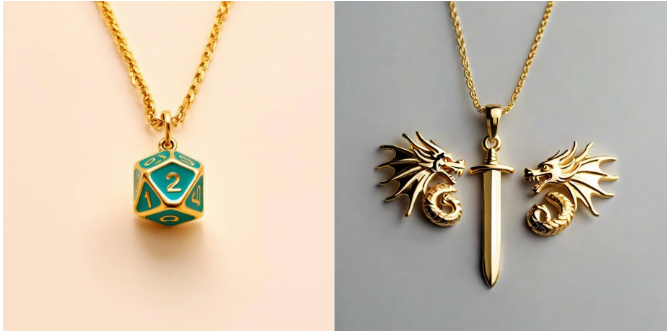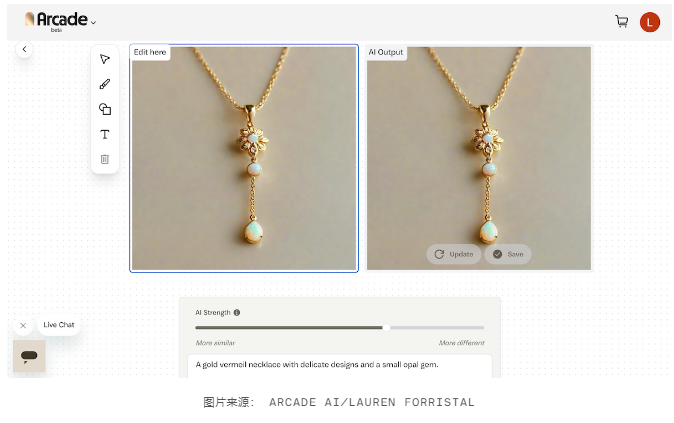Downcodes editors take you through Arcade, a new jewelry design platform created by Eve and Minted founder Mariam Naficy. It allows users to input ideas, and AI generates personalized jewelry designs that are made into physical objects by craftsmen. Arcade not only empowers independent artists, but also returns creative control to users, providing an unprecedented personalized jewelry customization experience. Let’s take a closer look at what makes this platform unique, as well as the challenges and future directions it may face.
Mariam Naficy, founder of cosmetics retailer Eve and design marketplace Minted, has been committed to supporting independent artists and helping them sell their products. Her latest project, Arcade, is a new kind of marketplace designed to put creative control directly into the hands of users.
The platform, which launched in beta in September, allows customers (called "dreamers") to input their creative ideas to generate diverse jewelry designs, and users can also upload images for personalization.
Once the client confirms the design, Arcade assigns a craftsman to transform the digital concept into actual jewelry, including bracelets, charms, earrings, necklaces, rings and more. Users can choose from a variety of materials such as gold, brass, silver and a variety of gemstones including diamonds, garnets and rubies.
Naficy tested the platform herself and after entering her personal preferences, the generator designed a delicate gold floral necklace for her. After placing the order, she received the finished video for approval within days, and the entire process took about two weeks.

Image credit: Arcade AI/Lauren Forristal
Although the necklace may look ordinary, Naficy feels it perfectly reflects her aesthetic, and the quality of the opal chosen was recognized by her friends.
Nonetheless, there were some challenges encountered during the generation process, such as the generator not performing well when designing multiple ornaments and having difficulty creating complex items.
To ensure the design is producible, the platform limits the generator so that it meets the manufacturer's requirements, Naficy said. Fortunately, the platform provides an editing tool that allows users to make adjustments to the design, although the results are not always as expected.
In the future, Naficy plans to improve the platform and add more features, such as image prompt adapters, which will allow users to modify designs more easily. Although designing jewelry on Arcade can cost more, around $1,000 or more, expect to pay around $100 for a simple design, with shipping ranging from $10 to $30.
Even if users are unable to purchase their designs, they can still enjoy the creative process and add designs to their personal "dream board." Naficy wants users to enjoy creating and share their creations with others.
In addition, designers can earn a 2.5% commission from sales, and becoming a seller requires meeting certain conditions, such as having 100 followers and selling three items.

Image credit: Arcade AI/Lauren Forristal
Using the platform's generators could spark controversy among jewelry designers, who fear their creations could be copied, affecting their livelihoods. However, Naficy stressed that Arcade’s artisans are positive about this, seeing it as a new opportunity to communicate directly with consumers.
Naficy also noted that the platform is not designed to exactly replicate uploaded images and that the similarity of the generated content can be controlled to protect artists' creations.
Arcade plans to expand into other categories such as accessories, clothing and leather goods in the future, potentially competing with emerging product creation platform Off/Script. In addition, Naficy hopes to add social features to allow users to interact and possibly launch design contests.
Arcade has raised $17 million in funding from a number of well-known investors, including Ashton Kutcher and Reid Hoffman.
All in all, Arcade has shown great potential in the field of personalized jewelry customization with its innovative AI-driven design model and support for independent artists. Although it still faces some challenges, its future development is worth looking forward to. The editor of Downcodes believes that Arcade will continue to improve and bring more surprises to users.